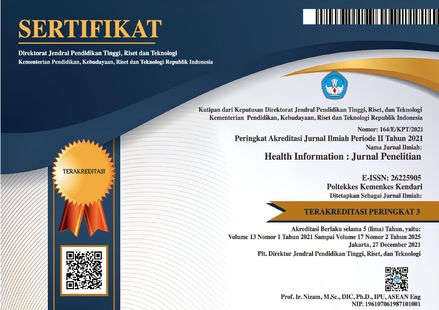Biomarker Terkini Untuk Membedakan Diagnosis Stroke Iskemik Dan Hemoragik Pada Pasien Dewasa Dan Lansia : Sebuah Review
Keywords:
Biomarker, Diagnosis, Ishemik stroke, Hemorhaggic strokeAbstract
Background: Stroke is a neurological deficit that occurs suddenly as a result of reduced or obstructed blood supply to certain parts of the brain. Stroke is the fifth leading cause of death in the United States and the third leading cause of death worldwide. Currently, neuroimaging examinations such as CT Scan and MRI are the gold standard in determining stroke diagnosis. However, these checks are limited, costly, and time consuming. Biomarkers are potensial tool that is currently being extensively researched to help diagnose stroke quickly and precisely, and they are used to differentiate between ischemic and hemorrhagic strokes. Objective: To know about the most recent biomarkers that can be used to distinguish between ischemic and hemorrhagic stroke in adult and elderly patients. Methods: Literature review of four database; PubMed, DOAJ, Cochrane, and Google Scholar published within the last 5 years, from 2018-2022. Results: There were 14 studies that reported effective biomarkers for diagnosing ischemic and hemorrhagic strokes, including Matrix Metalloproteinase (MMP), Thioredoxin, N-terminal brain natriuretic peptide (NT-proBNP), C-reactive protein (CRP), Sphingosine 1-phosphate (S1P), S100, Glial Fibrillary Acid Protein (GFAP), and Cystatin C. (CysC). Conclusion: Matrix metalloproteinase (MMP), Thioredoxin, N-terminal brain natriuretic peptide (NT-proBNP), C-reactive protein (CRP), and Sphingosine 1-phosphate (S1P) were discovered to be useful tools for diagnosing ischemic stroke. Meanwhile, because S100 and GFAP biomarkers can detect hemorrhagic stroke, they can be used to rule out an ischemic stroke diagnosis. In elderly patients, cystatin C (CysC) can be used as a biomarker for stroke.
Downloads
Published
How to Cite
Issue
Section
Citation Check
License
Copyright (c) 2023 Cindy Rachmadewi Ariyanto, Cindy Novela, David Yohan, Intan Dwi Wahyu, Ilham Alhaq (Author)

This work is licensed under a Creative Commons Attribution-ShareAlike 4.0 International License.
Authors retain copyright and grant the journal right of first publication with the work simultaneously licensed under a Creative Commons Attribution-ShareAlike 4.0 International License that allows others to share the work with an acknowledgment of the works authorship and initial publication in this journal and able to enter into separate, additional contractual arrangements for the non-exclusive distribution of the journals published version of the work (e.g., post it to an institutional repository or publish it in a book).











